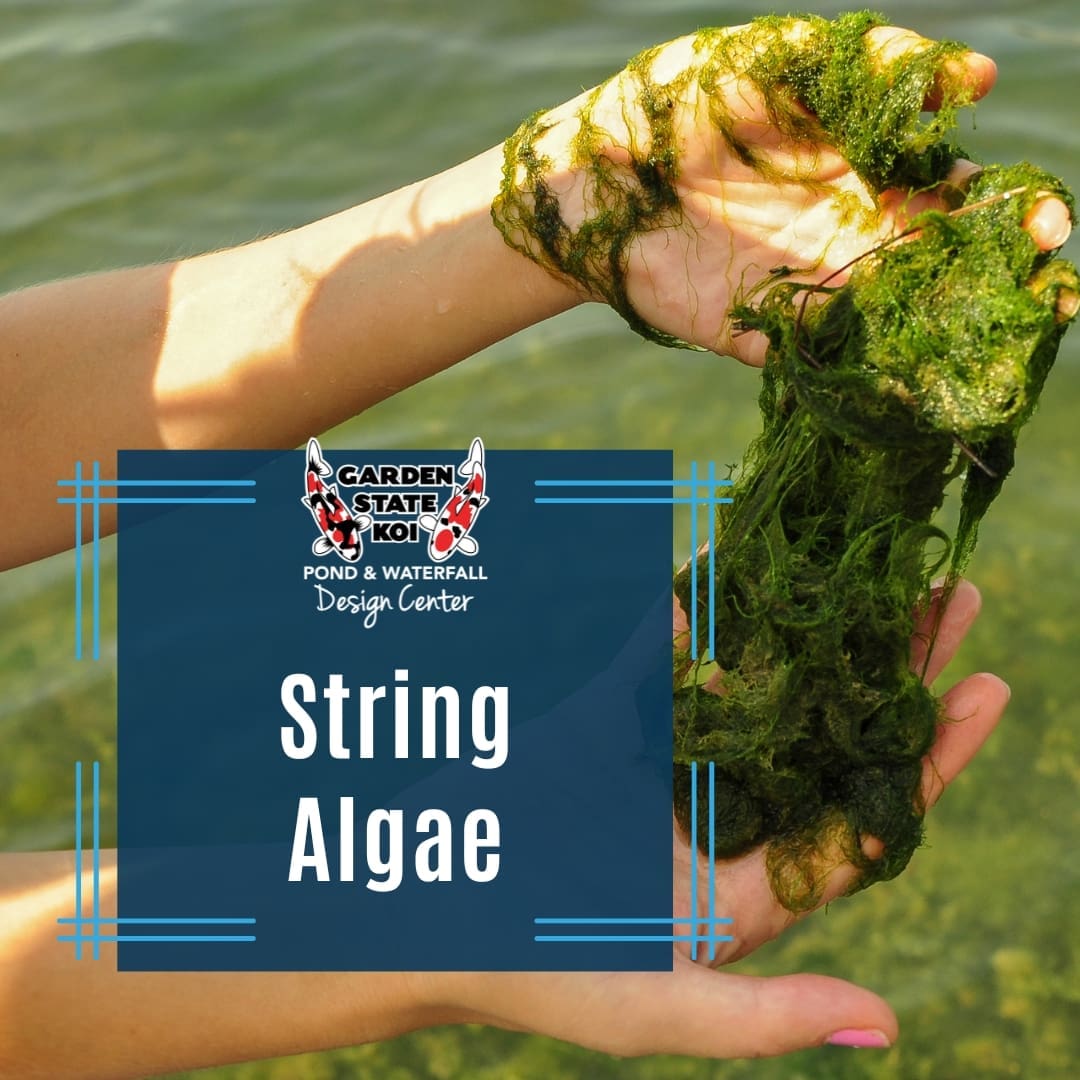Every pond owner has to deal with string algae in your koi pond and water garden at some point. Whether you have a large pond, small pond, a professionally-installed pond, or a backyard DIY pond, string algae happens to the best of us. String algae in your koi pond and water garden is nothing new, nothing unusual, and nothing to be ashamed of!
String algae is a common type of algae that is also known by the names of hair algae, blanket algae, mat algae, and even pond scum. String algae can be found in our koi ponds, water gardens, waterfalls, streams, water features, and fountains growing on surfaces such as rocks, liner, plants, and just about anywhere else that it can latch onto. The texture, color, and length of string algae can vary, and sometimes it may even appear black and slimy.
String algae is actually always present in our koi ponds and water gardens, but is not a problem until it blooms. It typically has patterns of blooming, most notably blooming during early winter, early spring, and mid-summer. When those string algae blooms occur, string algae treatments and equipment go flying off the shelves of Garden State Koi – so don’t wait to get yours!
What causes string algae?
String algae can be introduced to your pond in many ways, including via fish, plants, wind, humans, etc. There are a number of factors that will affect the growth and bloom rates of string algae, such as a dirty pond and dirty filters, overfeeding, overstocking, over-fertilizing, and/or poorly managed ponds with an abundance of nutrients in the water.
Changes in how your complex aquatic plants such as water lily, water iris, pickerel, and lotus are consuming nutrients can also affect string algae and their blooms. At certain times of the year, our complex plants consume more nutrients than usual, which leaves little available for algae to utilize.
Managing string algae
Fortunately, there are many ways to control string algae depending on how long you are willing to wait for the algae to clear. You can:
- Increase or improve your filtration to process nutrients more efficiently (this is a no-brainer solution to string algae control!)
- Practice manual removal – get in there and start pulling it
- Perform a cleanout of the pond
- Use chemical-based and bacteria-based treatments that clear string algae in your koi pond and water garden (we recommend EcoBlast treatment or Algaecides)
- Provide more oxygen to your pond with a simple air pump and diffuser, which is very effective, as well as adding more complex aquatic plants to out-compete algae for nutrient resources
- Add shade to your pond
- Try tinting your pond water, as long as you don’t mind blue or black water
- Bring in grass carp to eat up the algae, if you have a larger scale pond
Beware that any water changes can help reduce nutrients and growth rate of algae, but it can sometimes make it worse! Although most of these treatment options are not overnight solutions, all of them are effective when applied correctly and can be combined with other treatments as well. Be extremely careful with “overnight solutions” as fast-acting changes are NOT the best thing for livestock.
Here at Garden State Koi, we tend to lean on the IonGen system for string algae since it’s had the best results for us. Our team of water feature experts has installed many IonGen systems and they are easy to use once explained. Equipment such as ionizers are said to control and reduce string algae growth by half or more!
Even under the best of circumstances, there will always be a bit of string algae in your pond, and that isn’t necessarily a bad thing! As pond keepers, our goal should be to control it – not actually remove it. Let’s enjoy the benefits of it without the annoying factors (like those awful blooms) that drive us all nuts! Who likes seeing fish all tangled up in those long green strands? Not us! The next time your pond or water feature gets strung out, take a step back and give us a call and we will walk you through the best solution for your unique scenario.

